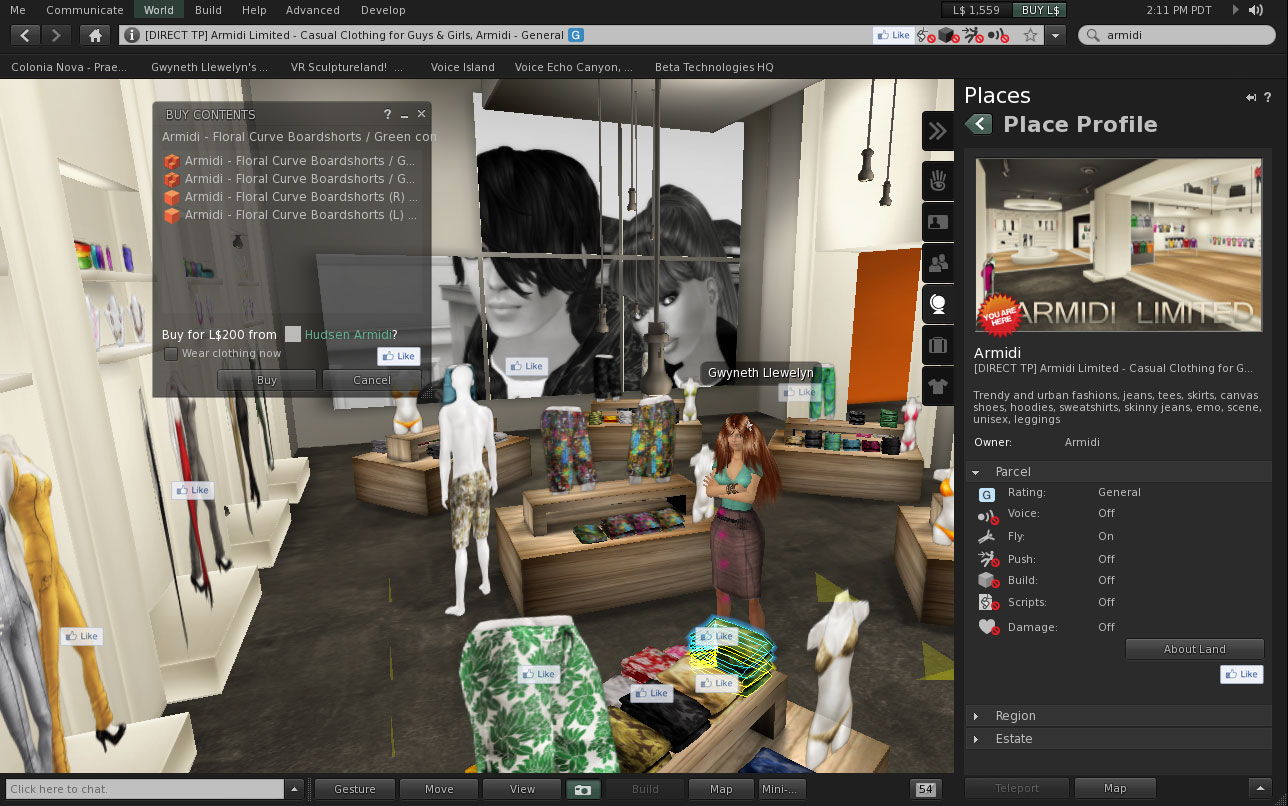All right, all right, the other post was obviously an April Fool’s post… nevertheless, two things are half-serious, and worth thinking a bit.
The first one was not really a joke. Tipodean did release its Unity3D, Web-based Second Life viewer as an open beta (previously, it was being tested as closed beta). You can really jump over to the BuiltBuy.me webpage, fill in the details, and run SL-on-Unity3D-on-the-Web — really. It works. It’s not perfect, but it works. It feels kind of strange seeing all those avatars and prims that you’re so used to seeing inside the SL renderer, now being displayed by a completely different rendering engine 🙂
The implications, as soon as Tipodean fixes the many annoying bugs and details, are staggering. LL’s own Web-based “experiment” is, well, simply the wrong approach — run SL on a remote server and stream a video over. The problem here is just the insane costs of such a solution: each resident will need a remote server that is powerful enough to run SL. Sure, from a purely technological point of view, it works; from an economical one, it simply doesn’t make much sense long-term — no matter if this is the current trend in high-end computer games. The difference is that people are used to pay monthly fees to play on those games, but one expects to be “free”.
No, SL-on-the-Web has to be quite a different experience altogether: prims and avatars have to be rendered locally, inside a plugin. Henrik Bennetsen, of Augmentation vs. Immersion fame, is proposing a SL-inspired clone that runs under WebGL, the upcoming 3D standard to be implemented on all Web browsers (except you-know-which). WebGL is definitely cool and will bring 3D gaming to the Web without crashy plugins or licensing nightmares from Adobe. Still, it’s not universally available.
Unity3D is. It works on the Web and as a native application in pretty much everything these days: PC, Mac, iPhone/iTouch/iPad, Andoid, Wii, Xbox. And, of course, on the Web. One engine, almost all platforms. Developers love the technology, and although it’s an engine for creating 3D games and virtual worlds — not a standalone virtual world — a lot of academics and companies have preferred it to Second Life, mostly because it runs on way more platforms than SL, is generally faster, has a marginally better renderer, and, of course, it works wonderfully on the Web. I guess it was jujst a question of time until someone configured the engine to display Second Life/OpenSimulator content, and that’s exactly what Tipodean has done — something I’ve been predicting for quite a long while, ever since I evaluated Unity3D for the first time. The Blue Mars guys did it all wrong; instead of betting on their “own” virtual world and develop a single-platform, impossible-to-port engine from scratch, they should have stuck with Unity3D and using OpenSim to store content — then they could have really created a “competitor” to SL which would have flown.
Tipodean, by contrast, is not “competing”: they’re just opening a door for more users to easily log in to SL (or, well, OpenSim), by removing the requirement of running a stand-alone application, but to use a mere Web browser instead. Sure, it’s still at the proof-of-concept stage, but it’s still uncanny to see all those prims and textures being rendered by a completely different engine that has nothing to do with LL’s code — something I have been waiting to happen for 4 years (yes, yes, I know I could have downloaded, say, Radegast which can display some 3D content via the Looking Glass plugin — if I had a PC or patience to port the code to the Mac! — and there have been several similar attempts in the past). Better still, Tipodean finally released a working viewer that runs both on the Web and uses the Unity3D engine. For my professional and academic uses, these are immensely powerful arguments — since a typical refusal to have anything to do with SL is the need to download a viewer, and/or requests for doing content in Unity3D. Well, now we can have both 🙂
No, contrary to what my April Fool’s article mentioned, it doesn’t run inside Facebook 🙂 Not yet, at least…





